Luanda is the capital and largest city of Angola. Luanda is also the number one port city, the most important industrial and cultural center. Located on the Atlantic coast of Angola, Luanda is the third most populous city in the world among Portuguese-speaking sites.
Today, the city is undergoing a major urban transformation, and construction continues in many new zoning areas. Angola, whose main revenue is exports of oil, diamonds and similar underground riches, is investing heavily in the construction of luxurious and stylish buildings that will change the silhouette of the capital.
Map of Angola with the Capital City Luanda
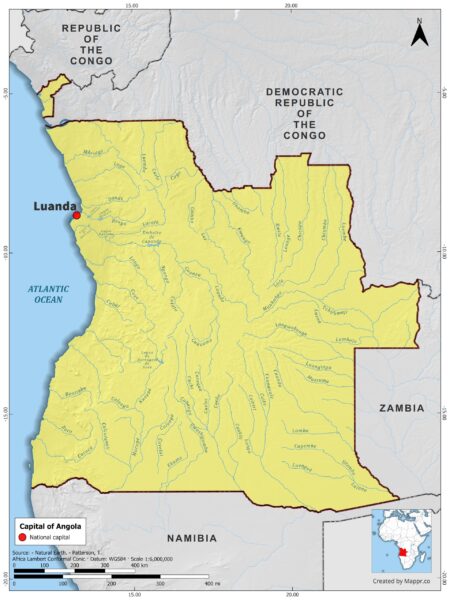
Where is Luanda
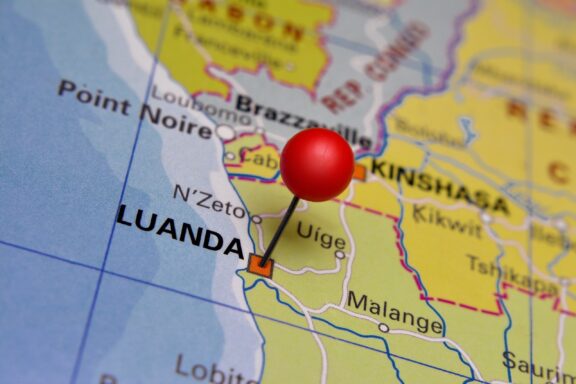
Luanda is located on the western coast of Southern Africa, in the country of Angola. More specifically, it is positioned on the Atlantic coast of the country. The city is built around Luanda Bay, a natural harbor. It’s roughly halfway between the southernmost and northernmost points of the country and is the most populous city in Angola, serving as its administrative and economic hub.
History of Luanda
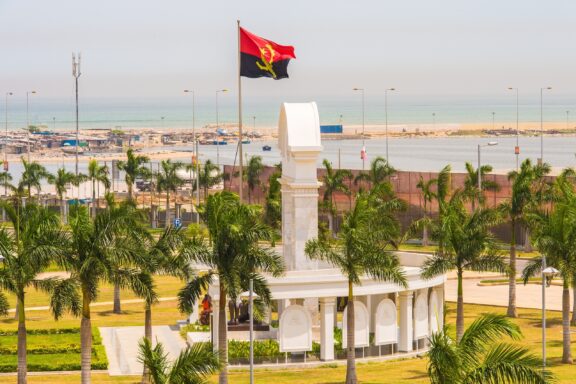
Luanda, the capital of Angola, has a rich and diverse history that spans hundreds of years. Founded in 1576 by Portuguese explorer Paulo Dias de Novais, it was initially a fortress and small settlement known as São Paulo da Assunção de Loanda.
From its earliest days, Luanda’s location made it a key port for the Portuguese slave trade, and it rapidly grew as an important center of slave trafficking to Brazil and the Caribbean.
In the late 19th century, as the slave trade declined, Luanda became a major commercial center, with various industries developing, particularly fishing and marketing commodities like palm and peanut oil. When Angola gained independence from Portugal in 1975, Luanda became the new nation’s capital.
The city experienced rapid urban growth throughout the latter half of the 20th century, particularly during the Angolan Civil War (1975-2002), as people migrated to the city to escape fighting in other regions.
Features of Luanda
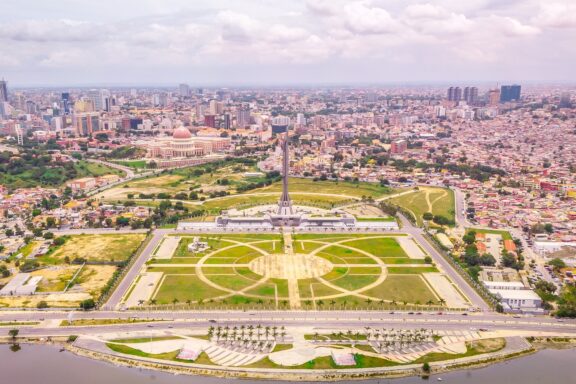
Luanda, the capital and largest city of Angola, is a city with a unique mix of natural beauty, cultural richness, and rapid modern development.
The city showcases an interesting blend of old and new. It houses colonial Portuguese architecture, like the Fortaleza de São Miguel, juxtaposed with modern high-rise buildings and infrastructure projects that reflect its oil-fueled economic boom.
Geography and Climate
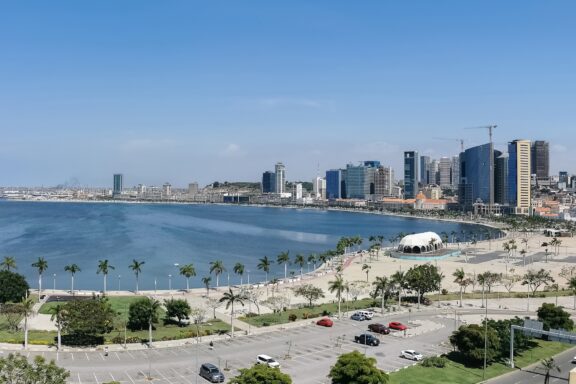
Luanda is situated on the western coast of Angola, overlooking the Atlantic Ocean. It is characterized by its coastal plain, which extends inland to rolling hills and a series of plateaus.
The climate in Luanda is tropical, with a cool, dry season (May to October) and a hot, rainy season (November to April). Due to the Benguela Current flowing north from Antarctica, the coastal climate is relatively cooler than the inland regions of Angola. The average annual temperature is around 24 °C (75.2 °F).
Population
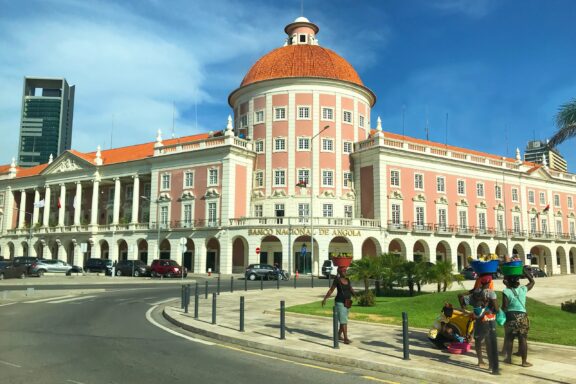
Luanda is one of the most populated cities in Africa, with an estimated population in 2021 was around 8.88 million people.
The city is diverse, with the majority being of African ethnicity, particularly of the Ovimbundu, Ambundu, and Bakongo groups.
Portuguese is the official and most commonly spoken language, with Bantu languages also widely spoken.
Economy
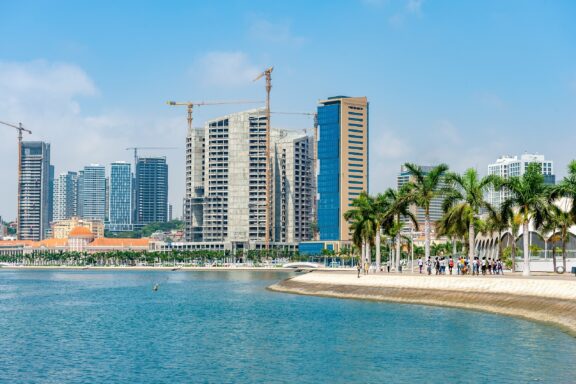
The economy of Luanda is the largest in Angola and one of the largest in Southern Africa. It relies heavily on the oil sector, which dominates Angola’s economy and has spurred significant growth in Luanda. Other key industries include diamond mining, fisheries, manufacturing, and construction.
Things to Do and Places to See in Luanda
There is a wide variety of things to do and see in Luanda. Let’s take a look at some of the most popular sites and attractions in Luanda:
1. Fortaleza de São Miguel
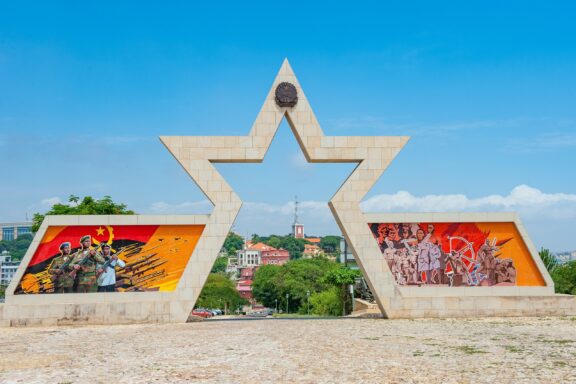
Fortaleza de São Miguel is a Portuguese fortress located in Luanda. Built-in 1576, it is the oldest surviving building in Luanda. The fort offers panoramic views of the city and the harbor. The fortress now houses the Museum of the Armed Forces, displaying exhibits on Angola’s military history.
2. Viewpoint of the Moon
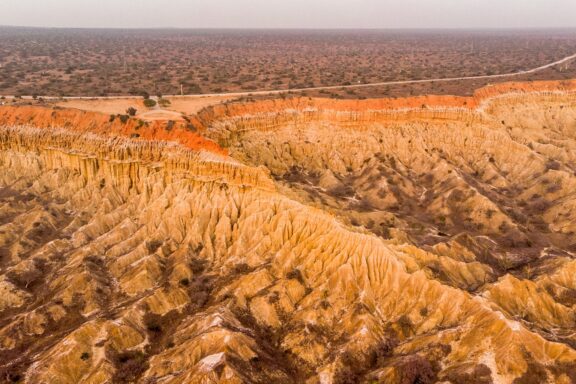
The Viewpoint of the Moon (Miradouro da Lua) is a stunning natural attraction located just outside Luanda. It offers extraordinary views of the eroded landscape, which resembles the surface of the moon. The area is stunning at sunset when the landscape takes on a range of hues.
3. Museu de Moeda
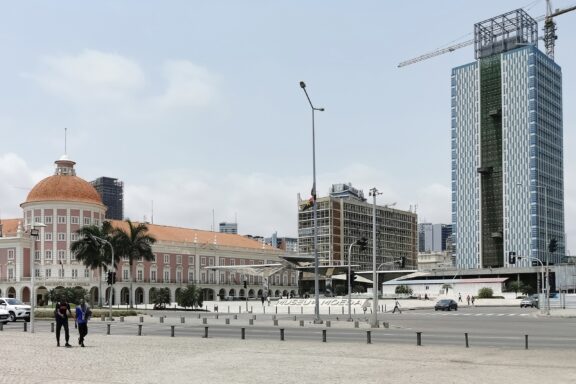
The Museu da Moeda (Currency Museum) in Luanda is dedicated to the history of currency in Angola. Housed in a beautiful colonial-era building, the museum displays an extensive collection of currencies that have been used throughout the country’s history.
4. National Museum of Slavery
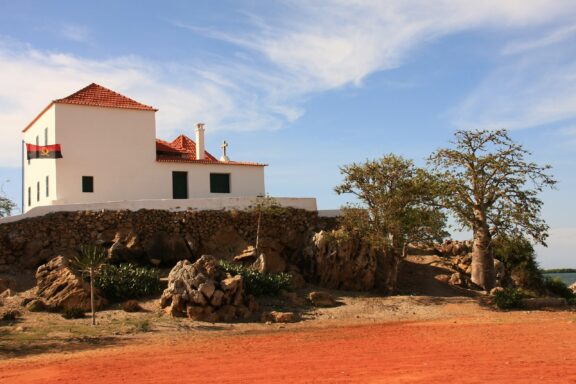
The National Museum of Slavery (Museu Nacional da Escravatura) is located in Luanda. The museum offers a poignant exploration of the history of the slave trade in Angola, which was once a major hub for the Portuguese slave trade. The museum is located at the site of a former slave market, adding to the gravity and historical relevance of the place.
5. Ilha do Cabo
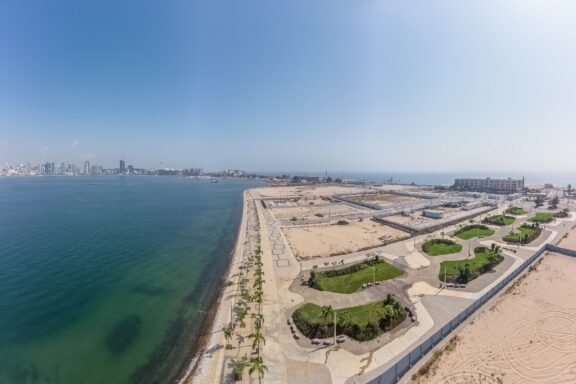
Ilha de Cabo, or Luanda Island, is a narrow strip of land extending parallel to Luanda’s Bay. It’s known for its restaurants, bars, and clubs, as well as its beautiful beaches. It’s a popular place for locals and tourists alike to relax, eat, and enjoy the beach.
Image Sources and Copyright Information
- Angola capital map: © Mappr
- Map Pinpointing Luanda in Angola: © JoaoCachapa/Shutterstock
- Monument and Flag in Luanda: © Anton_Ivanov/Shutterstock
- Aerial View of Luanda Cityscape: © IgorManuelPinheiro/Shutterstock
- Luanda City Skyline and Coastline: © Miguel Almeida/Shutterstock
- Commuters and Colonial Building in Luanda: © rosn123/Shutterstock
- Luanda Business District Skyline and Waterfront: © Said Mrigua/Shutterstock
- Star-shaped Monument at Fortaleza de São Miguel: © Said Mrigua/Shutterstock
- Aerial View of Arid Landscape: © gabs1510/Shutterstock
- Urban Landscape with Historical Building and Construction Site: © Miguel Almeida/Shutterstock
- Colonial Building on Rocky Terrain Under Clear Sky: © Miguel Almeida/Shutterstock
- Coastal Cityscape and Park Aerial View: © Miguel Almeida/Shutterstock